Table of Contents
Want to avoid hunger pangs interrupting your day? The answer is high-fiber foods! Eating fiber-rich foods can also do wonders for digestion and nutrient absorption. There are other health benefits, like reduced blood pressure, lower insulin levels, and less weight gain.
In this article, we detail 25 high-fiber foods with tips on how to build a nutritious high-fiber diet. Get ready to feel more satiated and envigorated with every healthy bite!
What is dietary fiber?
It might be news to some, but dietary fiber is actually a type of carbohydrate. What’s more, our bodies don’t have enzymes to digest fiber, so it passes virtually unchanged through our digestive system.
There are two main types of fiber—soluble and insoluble—which perform different functions, and a fiber-like substance called resistant starch.
Soluble fiber
Soluble fiber dissolves in water and forms a gel-like substance in your stomach, slowing down digestion and the absorption of nutrients. Slower digestion means better control of blood sugar levels and satiety (1).
Furthermore, soluble fiber has prebiotic properties, providing nutrients for the beneficial bacteria in our gut (2).
Insoluble fiber
Insoluble fiber, however, does not dissolve in water and passes through the digestive system intact. It absorbs water and adds bulk to our stool, thus stimulating your colon to contract, which helps promote regular bowel movements.
Besides soluble and insoluble fiber, there are other types of fiber that benefit our health.
Resistant starch
While resistant starch is not classified as a fiber, it is a complex carbohydrate that resists digestion and functions like fiber. It has prebiotic properties, just like soluble fiber. Resistant starch can be found in under-ripe bananas, potatoes, and whole grains (3, 4, 5)
Oligosaccharides (AH-lih-goh-SAK-uh-rydz) can be found in garlic, onions, and asparagus. These are also prebiotic fiber that supports a healthy gut environment (6, 7).
25 fiber-rich foods for optimal health
Not sure how to get enough fiber every day? Here are 25 high-fiber foods to add to your diet. We detail the amount of fiber, nutritional values, and some ideas for enjoying each food.
Feel free to scroll down to foods you would love to eat:
The best high-fiber fruits
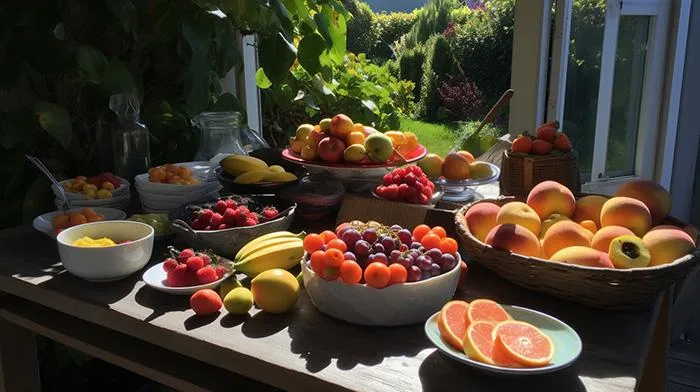
1. Apples
- A medium-sized apple with skin (182 g) has 4 g of fiber.
‘An apple a day keeps the doctor away.’ There is a reason why this saying exists. Apples are high in fiber, mostly insoluble fiber. Besides high fiber content, apples are great for vitamin C and antioxidants. These can improve blood health, thus preventing diabetes and heart conditions (8, 9).
To benefit from maximum dietary fiber, clean the apple and eat it with the skin on, or dice it up to add a crunchy and sweet taste to a yogurt or a salad.
2. Berries
- Raspberries: 1 cup (123 g) 8 g fiber; blackberries 7.6 g; blueberries 4 g; strawberries 3 g per cup.
Berries are colorful and nutritious and make you shine with good health. They are high in fiber and low in calories, making them a bonus to any diet. A study even found that cranberry and blueberry helped lower the body fat of obese mice (10).
Berries are also high in vitamin C and antioxidants, which protect the body from the harm of free radicals.
Eat your berries directly as delicious snacks, or blend them into a smoothie. Blending won’t destroy the fiber content, so blend away!
3. Bananas
- One medium banana has 3.1 g of fiber.
Bananas are the perfect fruit to grab on the go. Banana fiber can help prevent obesity and balance intestinal microorganisms (11).
You can also get resistant starch from green bananas. When they turn yellow, the resistant starch content degrades into regular starch.
Eating bananas can also improve your mood because they contain nutrients such as tryptophan and vitamins C and B6 (12).
Bananas are go-to snacks throughout the day and a smoothie favorite. For green bananas, try a Guineos en Escabeche recipe or even Jamaican green banana porridge.
4. Oranges
- One medium-sized orange (131 g) has 3.1 g of fiber.
Orange—a tasty fruit that is also a funky color! Oranges provide a good amount of fiber and abound with vitamin C, which has antioxidant effects and supports our immune system (13, 14).
There’s more to oranges than just peeling, eating, or squeezing! Try an orange and fennel salad, or get some color contrast with an orange and beet or orange and red cabbage salad.
5. Kiwi
- One kiwi (69g) has 2.1g of fiber.
This sour, fuzzy little fruit is packed with nutrition. High in vitamin C and antioxidants, a bite of a kiwi boosts your immune system and reduces inflammation.
Kiwis are delicious on their own, but they go great with avocados in smoothies, salads, or salsas. You can even make kiwi bread!
The best high-fiber vegetables
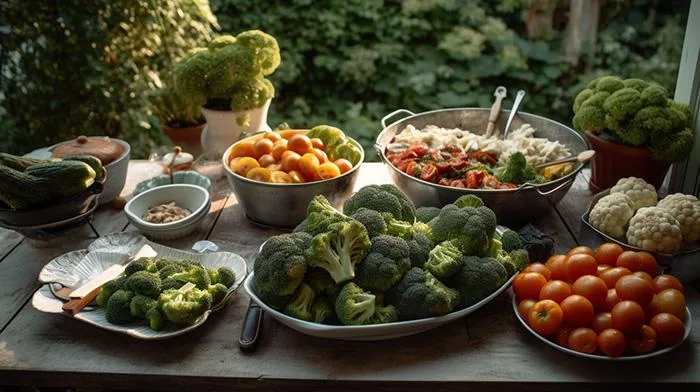
6. Broccoli
- One cup of chopped broccoli (91 g) has 2.4g of fiber.
Broccolis are tiny trees rich in soluble fiber. Research suggests that eating broccoli can improve gut microbiota. Broccoli also has many important vitamins and minerals for a healthy body (15).
Although broccoli leaves are usually thrown away, they are actually high in dietary fiber and anti-inflammatory compounds. Eating broccoli leaves benefits your body and helps the environment (16).
Broccoli is a very versatile ingredient. It can be boiled, stir-fried, roasted, or plainly added to your salad.
7. Carrots
- One cup of chopped carrots (128 g) has 3.6g of fiber.
Sweet and crunchy carrots are high in fiber and predominantly rich in insoluble fiber. Carrots are also high in beta-carotene, which turns into vitamin A in the body, supporting healthy eyes and skin (17).
A great fiber boost is a carrot and apple salad. Grated carrot also combines really well with apple cider vinegar.
8. Brussels sprouts
- One cup of Brussels sprouts (88 g) has 3.3g of fiber.
Brussels sprouts are a good source of insoluble fiber. Cruciferous vegetables like Brussels sprouts are especially rich in vitamin K, which is crucial for blood clotting and bone health (18).
Roasted or sauteed Brussels sprouts are a favorite, but you can also shred them raw and make a Brussels sprout Caesar salad.
9. Sweet potatoes
- One sweet potato (130 g) has 3.9 g of fiber.
Sweet potatoes, lovingly known as ‘yams,’ are nutritious root vegetables high in fiber and resistant starch. Like carrots, sweet potatoes are also high in beta-carotene, which is good for eye and skin health (19).
Slightly cooked sweet potatoes contain the highest amount of resistant starch. You can also slice them into thin pieces and bake them into healthy crispy chips.
10. Tomatoes
- One average tomato has 1.5g of fiber.
Though not the highest in fiber content, tomatoes have numerous nutrients and minerals that benefit your health. They are famous for having lycopene, an antioxidant that can help protect against certain types of cancer (20).
Salads, sauces, soups; enjoy nature’s ruby in any dish you like.
Legumes
11. Lentils
- One cup of boiled lentil (198 g) has 16 g of fiber.
Lentils are healthy and affordable options for many people. They are rich in fiber and contain high amounts of protein, vital for muscle growth (21).
A warm bowl of lentil soup is a perfect comfort food. Once cooked, drained, and cooled, lentils can be used in numerous dishes, marinades, or even in purees.
12. Chickpeas
- One cup (164 g) of boiled chickpeas has 12 g of fiber.
Chickpeas, or garbanzo beans, are little round legumes that pack a big punch. High in soluble fiber, chickpeas also provide healthy fats, vitamins, and minerals (22).
Blend chickpeas, tahini, lemon juice, and olive oil to enjoy a healthy and delicious hummus dip, or cook them up in an Indian curry.
13. Black beans
- One cup of black beans (172g) has 15 g of fiber.
Shiny dark-skinned black beans have a good amount of fiber. They also contain iron, which is ideal for all women, especially young girls who may need more iron (23).
Enjoy the sweet and creamy texture of black beans in your salad or in a classic burrito.
14. Kidney beans
- One cup (172 g) of boiled kidney beans has 11 g of fiber.
Large red kidney beans contain both fiber and resistant starch, perfect for those trying to control their weight. These beans are also rich in various minerals that benefit your health.
Delicious kidney bean soups, stews, and curries are too numerous to mention. For something different, try a Mediterranean kidney bean salad or scrambled eggs with kidney beans.
15. Lima beans
- One cup of boiled lima beans (188g) has 13g of fiber.
Perhaps not a popular option, but lima beans are high in fiber, protein, and iron, making them great for vegans and vegetarians.
Enjoy your lima beans in stews or casseroles, such as the popular Southern lima bean recipes, or as a mashed side dish. They can also be pureed into a lima bean ‘hummus’ or used as hearty fillings for veggie burger patties.
Whole grains rich in dietary fiber
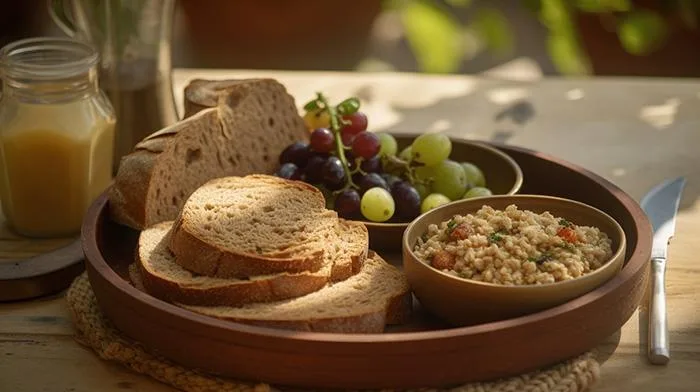
16. Oats
- One cup of cooked oats (254 g) has 4 g of fiber.
Oats are probably the most popular breakfast food in the world. Oats have soluble fiber beta-glucan, which lowers cholesterol levels and improves heart health (24).
Enjoy a nutritious morning oatmeal cooked with water or milk, or make a bowl of overnight oats flavored with any kind of fiber-rich fruit.
17. Brown rice
- One cup of cooked brown rice (195 g) has 3.5 g of fiber.
Brown rice is a whole grain with the bran and germ intact, unlike white rice, which has both removed. This makes brown rice a more nutritious option as it is a good source of fiber, vitamins, and minerals (25).
Cook and enjoy brown rice as you would with any white rice, or you can mix the two together.
18. Quinoa
- One cup of cooked quinoa (185 g) has 5g of fiber.
There is no doubting why quinoa is crowned as a ‘superfood.’ Quinoa has more fiber than several other popular grains.
Moreover, it is a complete protein, meaning it has all the amino acids our body cannot produce (26).
If you want to follow a gluten-free diet, this tiny seed is also your perfect choice. Unlike standard gluten-free products, often made with refined ingredients, quinoa is a nutritional whole food (27).
Enjoy quinoa in a salad or a breakfast bowl as a substitute for rice, or add it to a stir fry.
19. Whole wheat bread
- One slice of whole wheat bread has 2 to 3 g of fiber.
Made from whole grains and wheat, whole wheat bread is more nutritious than your regular white bread. It is high in fiber and contains vitamins and minerals essential for overall health.
Whole wheat bread can be in many forms, from sliced bread to bagels, and enjoyed in many ways as a nutty breakfast sandwich with a creamy avocado spread.
20. Bulgur wheat
- A half cup of bulgur wheat (70g) has 13 g of fiber.
Bulgur wheat is a versatile grain that’s commonly used in Middle Eastern and Mediterranean cuisine. This nutritious whole grain is proven to help manage blood sugar levels and lower the risk of heart disease (28, 29).
Bulgur wheat can be used in pilafs, salads, or as a substitute for rice.
Nuts and Seeds rich in dietary fiber
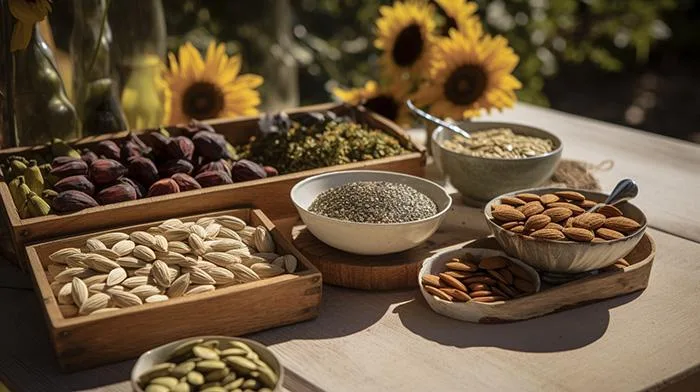
21. Almonds
- A handful of almonds (30 g) has 4g of fiber.
The nutty and slightly sweet almond has a good amount of insoluble fiber plus protein and healthy fats—all essential for a healthy body.
Furthermore, almonds are among the world’s best sources of vitamin E (30). Crush them and toss them in a salad for a crunchy flavor, simply enjoy them as a healthy snack, or bake them into a quintessential almond pie.
22. Chia seeds
- One tablespoon (18 g) of chia seed has 6g of fiber.
The tiny black and white chia seeds are high in fiber and omega-3 fatty acids, which are essential for heart health (31).
You can soak chia seeds in water to create a gel-like substance and then use this as a vegan egg substitute in baking. Or, simply sprinkle them on your oatmeal, add to a smoothie, or to yogurt for a nutritious treat.
23. Flaxseed
- One tablespoon of whole flax seeds (7 g) has 2 g of fiber.
Flaxseed has been eaten for thousands of years and has multiple health benefits. It has plenty of fiber, protein, and omega-3 oils that reduce inflammation, improve heart health, and aid digestion.
Flax milk is a plant-based, lactose-free milk alternative made from ground flax seeds and water. Ground flax seed can also be added to morning oats.
24. Pistachios
- One cup of pistachios (123 g) has 13 g of fiber.
Called ‘happy nuts’ in Chinese, pistachios are fun to eat. Besides their high fiber content, pistachios are also high in protein, healthy fats, and antioxidants—all good for cognitive function and skin health (32, 33).
Enjoy pistachios directly as a snack, or bake them into cookies.
25. Sunflower seeds
- A half cup of sunflower seeds (70g) has 6 g of fiber.
These little seeds pack a big nutritional punch! Sunflower seeds are high in healthy fats, protein, and vitamin E, which can help improve skin health and boost your immune system.
Some people like to pick the shells open for a snack. But you can also lightly roast them for salad toppings, mix them with oatmeal, blend them into a salad dressing, or bake them into crunchy seed bars.
Benefits of eating high-fiber foods
There are many good reasons to increase fiber in your diet. The most obvious is for better weight management and digestive health. Fiber, however, can also help prevent a number of diseases. Keep reading to find out all the benefits of fiber:
Weight management
A high-fiber diet is ideal for people aiming for a healthy weight.
Increased fiber promotes a feeling of fullness so that you can avoid overeating. Since fiber cannot be digested, it moves slowly through your stomach, making you feel full for longer (34).
A study showed that a resistant starch intake in healthy men decreased their energy consumption (35).
You can eat foods that are both high in fiber and protein to feel fuller for longer since higher protein intake also promotes satiety. Examples of these foods are lentils, quinoa, and black beans.
Digestive health
Fiber is the core of a healthy digestive system. More fiber can better regulate bowel movements, preventing digestive issues such as constipation and diverticulitis (36).
Both soluble fiber and insoluble fiber support bowel movement. Soluble fiber’s gel-like substance softens the stool and makes it easier to pass, while insoluble fiber adds bulk to the stool, stimulating bowel muscles to work (37).
As a prebiotic, fiber also serves as food for the beneficial bacteria in our gut. A healthy gut microbiome helps with digestion, nutrient absorption, and synthesizing vitamins and other compounds important to health.
Heart health
High-fiber diets have been associated with a healthy heart because fiber can help lower cholesterol levels, thus reducing blood pressure.
Soluble fiber has been proven to lower blood cholesterol levels, especially lower LDL cholesterol, commonly known as ‘bad’ cholesterol. The gel-like substance that soluble fiber produces binds to cholesterol, preventing it from being absorbed (38, 39, 40).
Fiber can also support a healthy gut microbe, which further supports heart health. A study found a high-fiber diet changed the gut microbiota populations and prevented hypertension and heart failure in hypertensive mice (41).
Diabetes prevention
Fiber can also help regulate blood sugar levels and improve insulin sensitivity, reducing the risk of developing type 2 diabetes (42, 43, 44).
Since soluble fiber slows digestion, there’s more time to absorb nutrients and glucose into the blood. This prevents a sudden surge of blood sugar levels, which in turn improves insulin sensitivity.
High fiber intake has numerous health benefits. It can help you manage weight by promoting a sense of fullness. Furthermore, fiber helps the digestive system work better. Finally, fiber can help regulate blood sugar and cholesterol levels, thus helping to prevent diabetes and heart conditions.
How to meet daily dietary fiber needs
You may be asking, “How much fiber do I actually need every day?” There is a recommended baseline of fiber intake, according to health experts, but the best amount varies depending on your current situation.
Find out exactly how much you need to sustain a healthy body.
Daily fiber recommendations from different health organizations
The recommended daily fiber intake suggested by various health organizations differs slightly.
- The American Heart Association (AHA) recommends a total dietary fiber intake of 25 to 30 g from foods, not supplements (45).
- The Academy of Nutrition and Dietetics suggests 14 grams for every 1,000 calories per day, or about 25 g for women and 38 g for men (46).
- The World Health Organization suggests a minimum intake of 25 g of dietary fiber per day for a healthy adult (47).
Despite minor differences, the best average recommended daily fiber consumption is about 25 g for women and 38 g for men. Studies show that most people need to eat more fiber, as only 5 percent of Americans are eating over the suggested rate (48).
However, daily fiber needs may change depending on the factors below:
Factors affecting individual fiber needs
Age
Older adults may need less fiber than younger people to maintain digestive health. Since older people have a slower metabolism, their digestive system becomes less efficient. Eating too much high-fiber food may cause discomfort and bloating (49).
Gradually reducing fiber as we age is recommended for a healthy body.
Gender
The recommended intake for men is higher because men generally have a larger body size and need more calories than women. This means they need more fiber to maintain good digestive health.
Furthermore, men are at higher risk of developing heart diseases, which a high-fiber diet can prevent (50).
Physical activity level
Not surprisingly, people who are less physically active need a higher amount of fiber to help their bowels move to avoid constipation. This is a common issue for sedentary people.
On the other hand, increasing fiber is tricky for those with high physical activity levels, like athletes. When you exercise, your body requires more energy; fiber can help normalize blood sugar levels and provide sustained energy.
However, because fiber slows down the digestive system, this lowers your energy absorption efficiency. So avoiding high-fiber diets before or after a high-intensity physical activity can help your body get the fuel it needs.
Health status
Certain health conditions and medications can affect fiber needs.
For example, people with digestive disorders such as diverticulitis may need to modify their fiber intake based on their symptoms.
In some cases, they may need a low-fiber diet to reduce digestive symptoms, while in other cases, increasing fiber can promote regular bowel movements (51, 52).
Medications can also affect fiber needs, as some medicines can cause constipation or diarrhea, which may require you to adjust your fiber intake to promote healthy bowel function.
It is important to discuss your medical conditions with a healthcare provider or a registered dietitian about your recommended fiber needs.
The recommended daily fiber consumption is about 25 g for women and 38 g for men. Yet, the amount of fiber you should eat can vary depending on age, gender, physical activity level, and health conditions.
Tips for adding high-fiber foods to your diet
If you’re convinced of the numerous health benefits of fiber, it’s time to start building a fiber-rich diet. To help you get started, here are some tips and tricks:
Slowly increase fiber intake
Sometimes people get over-excited when starting a high-fiber diet and increase their intake too quickly.
A sudden high-fiber increase in your diet can lead to digestive problems like bloating, gas, and diarrhea. Therefore, allow yourself to adapt by gradually eating more diet over a couple of weeks.
You can start with cooked vegetables, bananas, or smoothies since they are easier to digest.
Choosing whole foods
Many people try shortcuts like taking fiber supplements. There is nothing wrong with supplements as such, but a diet rich in whole foods can be more beneficial overall.
Since whole foods are natural and minimally processed, they still are rich in natural fiber content. Furthermore, whole foods provide nutrients and minerals that benefit overall health.
Staying hydrated
Drinking enough water is crucial when eating more fiber because fiber absorbs water and softens our stool to promote regular bowel movement. Without enough moisture, fiber may dry the digestive tract and cause constipation and discomfort (53).
Drink at least 8 cups of water per day, or eat foods naturally high in water, like oranges and carrots.
Try new recipes
Starting a fiber-rich diet doesn’t have to be boring. Experimenting with new recipes with nutrient-dense foods can make the process more enjoyable and help you build a diet you love.
Here are some examples of high-fiber snacks and meals:
- Breakfast: Oatmeal with fruit and nuts, whole grain toast with peanut butter, or a smoothie with spinach, banana, and chia seeds.
- Lunch: Vegetable stir-fry with brown rice or a salad with quinoa.
- Dinner: Baked sweet potato with black beans, whole grain pasta with vegetables.
- Snacks: Fresh fruit, raw vegetables with hummus, nuts, or whole grain crackers.
How does fiber help with digestion and gut health?
Fiber promotes regular bowel movements and prevents constipation. It also provides nutrition for the beneficial bacteria in the gut. In addition, fiber regulates blood sugar levels and lowers cholesterol, promoting heart health.
What are some easy ways to get more fiber?
You can easily get more fiber by eating more vegetables and fruits or switching to whole grains instead of refined carbs. You can also throw in healthy high-fiber snacks, such as nuts, throughout the day.
What are the risks of eating too much fiber?
Too much fiber can cause digestive discomfort, such as bloating and stomach pain. Excessive fiber can also absorb too much water and cause dehydration. It’s important to slowly increase fiber intake and drink plenty of water to avoid these risks.
Can fiber supplements be used to meet daily fiber needs?
Yes, fiber supplements can help you reach your daily needs, but solely relying on supplements is not a good strategy. Instead, try a high-fiber diet with whole foods in order to benefit from additional nutrients essential for good health.
What amount of fiber should I eat daily?
The recommended daily fiber intake is 25 grams for women and 38 grams for men. However, age, physical activity levels, and medical conditions might influence the amount of fiber you eat.
Summary
Eating enough fiber is essential for good health. Fiber improves digestion and helps control your weight, blood sugar, and cholesterol. Build your diet on whole foods like fruits, legumes, and vegetables, and drink plenty of water. Eat more fiber and enjoy a healthier, happier life!






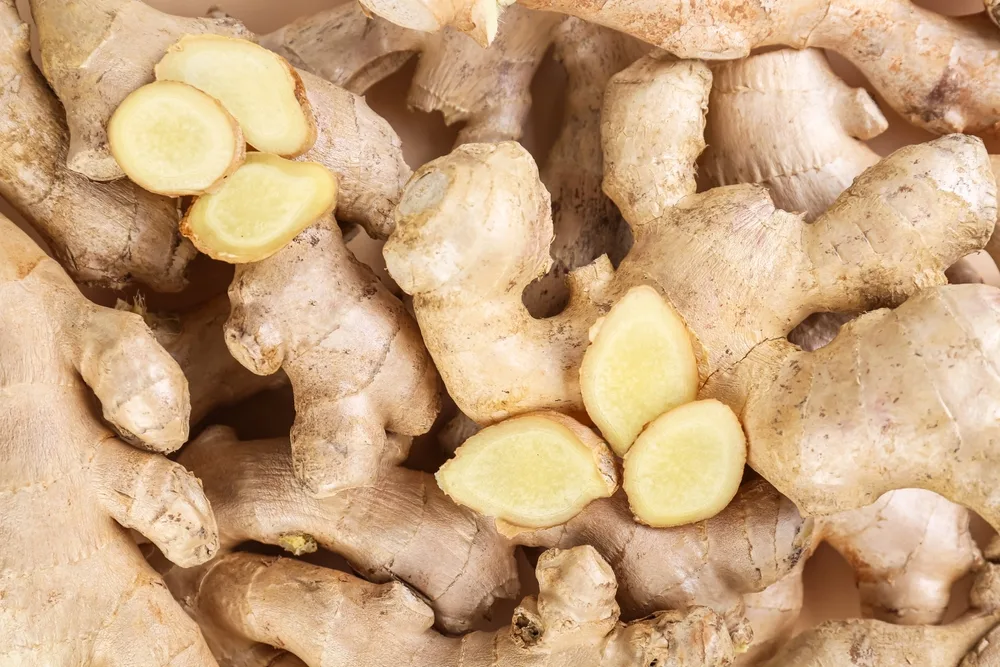
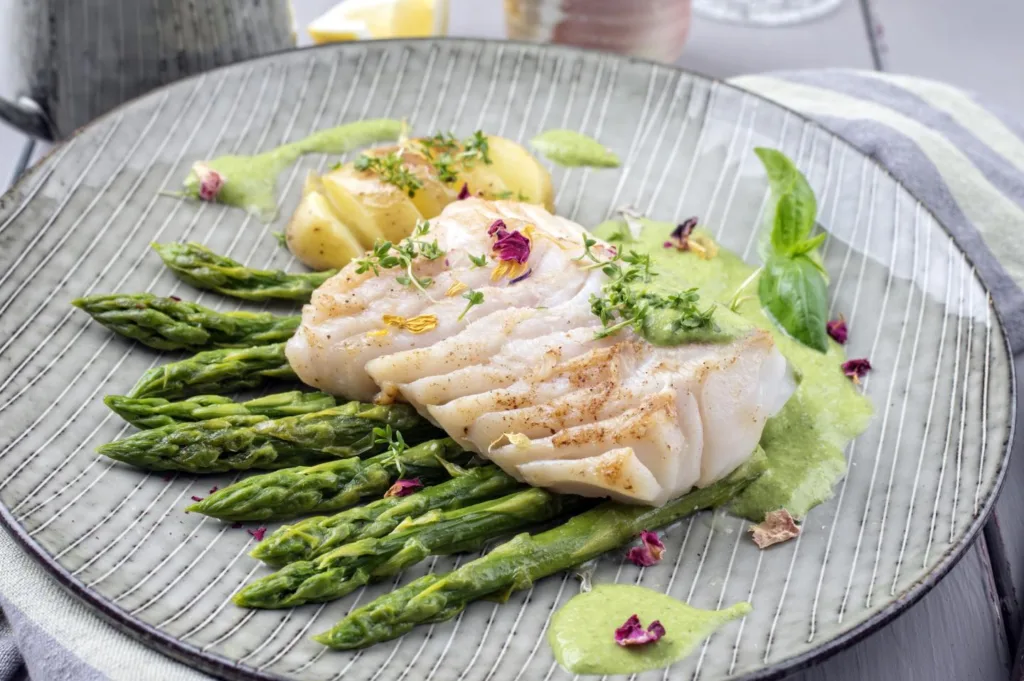
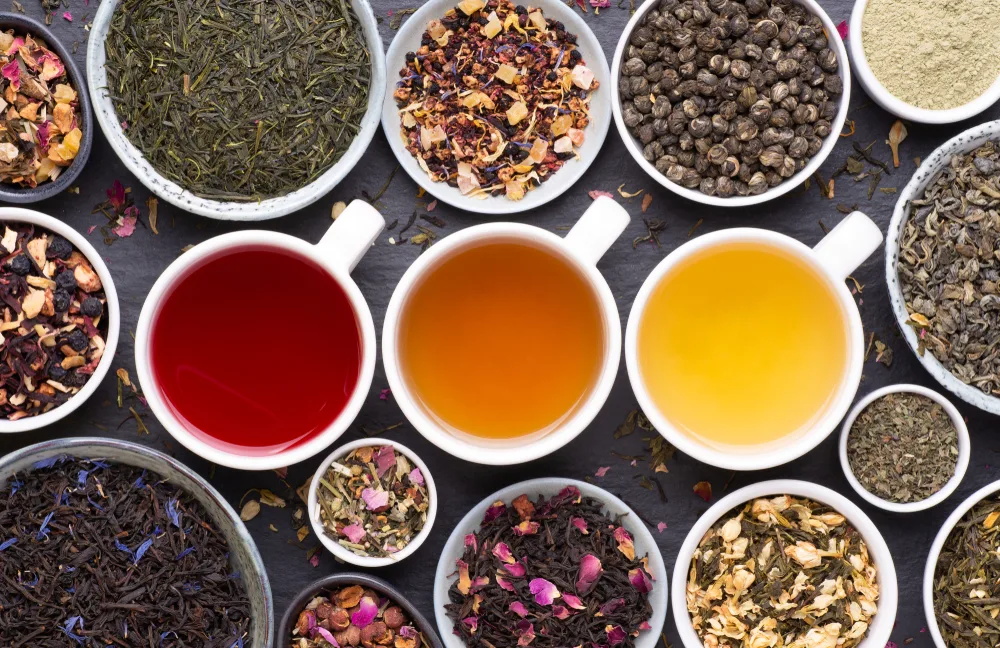







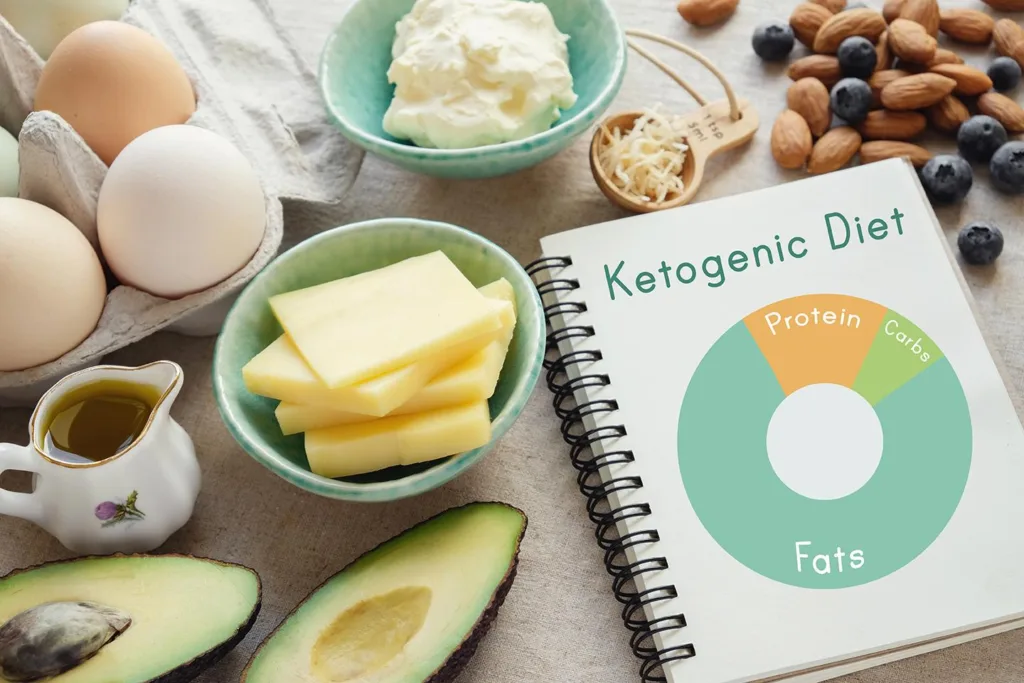
Comments
0